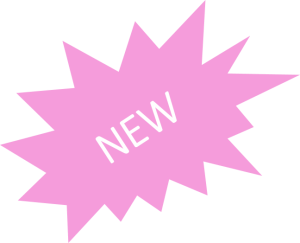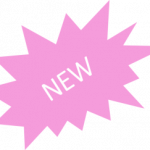Hands-on workshops will allow students to understand the basic principles of the technologies, plan clinical interventions and experiments and use the devices and tools in real applications.
Students will complete two tracks of workshops throughout Monday, June 13 to Wednesday, June 15, based on selected preference and workshop availability. The content of each workshop will span all three days, so it is necessary to attend the three days to make the most of the workshop.
 6/12/22: Final Student Workshop Assignments
6/12/22: Final Student Workshop Assignments
Workshop Track A (early afternoon): WS1, WS2, and WS4.
Workshop Track B (late afternoon): WS3+6 and WS5.
 6-12-22: Workshop Daily Topics and Speakers uploaded!
6-12-22: Workshop Daily Topics and Speakers uploaded!
WS1 – Advanced Control of Prosthetics
In this workshop, we will introduce techniques for surface EMG recordings to estimate the neural signal sent to muscles from the output layer of the spinal cord circuitries. Specifically, we will present methods for multi-channel EMG acquisition and their applications in neurorehabilitation, such as in prosthetics and neurofeedback. Students will be engaged in recording and processing EMG signals using instruments and tools provided by the organizers. They will learn to extract features from the EMG signals and train an algorithm to control a prosthetic hand.
Hosted by: Imperial College London (ICL)
Day 1: EMG Acquisition
14:00-14:15 – Demo of prosthetic control with EMG (Patrick SA)
14:15-14:45 – Introduction to workshop project and EMG acquisition systems (Patrick SA and Milia H)
14:45-15:30 – Hands on Student acquisition of EMG with multichannel bracelet
15:30-16:00 – Demonstraction of High Density surface EMG acquisition (Andrea B from OT Bioelettronica)
Day 2: Implementation of Control System
14:00-14:15 – Project structure and task overview (Milia H and Patrick SA)
14:15-14:45 – Implementation of feature extraction (Milia H)
14:45-15:15 – Implementation of Algorithm training (Milia H)
15:15-15:45 – Testing algorithm (Patrick SA and Milia H)
15:45-16:00 – Wrap up (Patrick SA and Milia H)
Day 3: Testing of complete system with prosthetic
14:30-14:45 – Introduction to mechatronics in prosthetics (Patrick SA)
14:45-16:15 – Project Evaluation (Patrick SA and Milia H)
16:15-16:30 – Concluding Remarks (Patrick SA and Milia H)
WS2 – Exoskeletons: Design and Controllers
Robotic exoskeletons have been increasingly used to augment human mobility and improve the outcomes of physical rehabilitation during the last decade. However, mechanical designs that do not allow comfortable fit and efficient energy usage create a limitation for these devices to be more commonly used. Another main challenge in the field is designing controllers that provide transparent interaction and co-existence feeling between the user and the exoskeleton. In this workshop, we will approach these challenges from different perspectives and provide hands-on experiences with some of the commercial exoskeletons.
Hosted by: Shirley Ryan Abilitylab (SRALab) and Technaid
Day 1: Dyadic Physical Interaction with Ankle Exoskeletons
14:00-14:30 – Optimal Cooperation between Patient, Robot, and Therapist (Dr. Robert Riener)
14:30-15:00 – Interaction Force Control On Lower-Limb Exoskeletons with the X2 and M1 (Emek Baris Kucuktabak from SRALab)
15:00-15:15 – Effect of dyadic haptic collaboration on ankle motor learning and task performance (Matthew Short from SRALab)
15:15-15:35 – Dyadic Haptic Interaction Demo on X2 and M1 Robots (Emek Baris Kucuktabak from SRALab)
15:35-16:00 – Technaid Ankle Exoskeleton Demo (Technaid)
Day 2: Custom gait pattern generation suitable for Neurorehabilitation with Exoskeleton Exo-H3 (Technaid)
14:00-14:30 – Introduction to Exo H3 controllers and How to create custom gait patterns. This WorkShop aims to present a set of new features of the Exoskeleton Exo-H3 and how to use them. We prepared a three-step WS, starting with an actual patient’s gait data acquisition, wearing the Exo-H3 in Compliant mode. Then a post-processing step is achieved to obtain the new Human-Exoskeleton Gait.
14:30-15:00 – Compliant demo and automatic gait segementation
15:00-16:00 – Gait Kinematics Prediction tool Box from anthroprometric measurements to a custom gait with Exoskeleton. After detecting the gait phases, we can modify some parameters to perform a better gait. Before sending the new pattern to the Exoskeleton, we have the option to simulate a realistic rendering of the environments using our URDF-H3 model in Gazebo. Finally, the last part of the WS shows how to send a gait pattern to the Exo-H3 and watch its behavior in real-time.
Day 3: Exoskeleton Control, System Identification and Simulation
14:30-15:00 – Importance of on-line adaptation for symbiotic support (Dr. Shingo Shimoda)
15:00-15:30 – System Identification on X2 Lower-Limb Exoskeleton (Emek Baris Kucuktabak from SRALab)
15:30-16:40 – Exo-H3 & Gazebo Simulation (Elkyn from Technaid) Before using the Exoskeleton with a patient, we can simulate the behavior of the controllers using Gazebo and our Exo-H3. In this talk, we want to introduce some plugins used on Gazebo to simulate interactions between Exoskeleton and humans.
WS3+6 – Exoskeletons: Benchmarking and Clinical Perspectives on Adoption of Technology for Assessment and Intervention in Neurorehabilitation
Most of the exoskeletons are developed to assist mobility in uncontrolled daily-life environments or train users to improve their outdoor, overground walking abilities. However, the performance of these devices is mostly assessed in controlled laboratory environments, on treadmills, and preliminarily on healthy subjects. In this workshop, we will focus on the benchmarking methods and clinical effectiveness of the lower limb exoskeletons through short talks from experts in the field and with hands-on experiences. This workshop will also explore interdisciplinary collaboration in real world clinical setting, developing translational research and designing research studies in clinical populations
Hosted by: Shirley Ryan Abilitylab (SRALab) and Hospital Los Madronos (HLM)
**WS3 and WS6 have been combined into 1 workshop track.
Day 1: Evaluation of Exoskeletons
16:15-16:40 – Make Exoskeletons Simple, Soft, and Lightweight! (Dr. Robert Riener)
16:40-17:05 – Exoskeletons in the continuum of care model (Dr. Arun Jayaraman)
17:05-17:30 – Exo Survey Results (Dr. Antonio Oliviero)
17:30-17:55 – Embodiment and exoskeleton user perception (Dr. Marco Molinari and Alessandra Bigioni)
17:55-18:15 – Robotic-Assisted Therapy to Increase Muscle Strength in Hemiplegic Gait Rehabilitation (Javier Gil from Technaid=
Day 2: Benchmarking + EUROBENCH
16:15-16:45 – EUROBENCH: A unified framework for the benchmarking of wearable robots (Dr. Diego Torricelli)
16:45-16:55 – BENCH: Application case of the EUROBENCH workflow (Dr. David Rodriguez)
16:55-18:15 – Hands on Experience.
Despite the fast-growing exoskeleton market, several bottlenecks have prevented their wider implementation up to now. Some of these are technical, while others are related to the lack of standardized protocols and reliable performance and safety indicators that allow to assess and compare these devices objectively to meet international certifications and standardization requirements.
Day 3: Translational Research Model/Ask a Clinician Day
16:45-17:05 – Intro + Agenda. Clinical Perspectives on Adoption of Technology for Assessment and Intervention in Neurorehabilitation (Rebecca Schwanemann and Alyssa Jones)
17:05-17:25 – Frameworks to connect engineering to clinical implementation (Dr. Miriam Rafferty)
17:25-17:45 – Example of successful clinician and researcher collaboration in the inpatient setting (Jackson Levine)
17:45-18:05 – Using wearable sensors in clinical care and researcher (Dr. Arun Jayaraman)
18:05-18:45 – Translational Researchers, Clinicians, and Staff Panel (Rebecca Schwanemann, Alyssa Jones, Dr. Miriam Rafferty, Jackson Levine, Dr. Arun Jayaraman, Grace Hoo)
WS4 – Neuromodulation Techniques: Basic and Clinical Research
This workshop will explore a variety of neuromodulation techniques and protocols for basic and clinical research, such as transcranial magnetic stimulation, neuroplasticity protocols, peripheral electrical stimulation, and spinal cord stimulation. This workshop will also discuss the applications of these techniques in various clinical populations, such as post-stroke, Parkinson’s disease, and spinal cord injury.
Hosted by: Shirley Ryan Abilitylab (SRALab)
Day 1: Transcranial Magnetic Stimulation (TMS)
14:00-14:30 – Principles and applications of TMS (Dr. Julio C Hernandez-Pavon)
14:30-15:00 – Principles and applications of tSMS (Dr. Antonio Oliviero)
15:00-16:00 – TMS Demo and Hands-on: Neuronavigation, Motor mapping, Motor threshold (Arantzazu San Agustin Perez, Dr. Vanesa Soto Leon, Dr. Julio C Hernandez-Pavon)
Day 2: Spinal Cord Stimulation (SCS)/Peripheral Electrical Stimulation (PES)
14:00-14.45 – Methods of spinal cord stimulation (Dr. Vivian Mushahwar)
14:45-15:30 – Peripheral Electrical Stimulation during cycling movements of spinal cord injured persons (Dr. Jozsef Laczko)
15:30-16:00 – FES Demo (Dr. Jozsef Laczko)
Day 3: Peripheral Electrical Stimulation (PES)
14:30-15:00 – Introduction to PES (Dr. Jose Pons). This introduces the peripheral electrical stimulation technique.
15:00-15:15 – Does afferent-specific peripheral electric stimulation disrupt proprioception? Preliminary results (Nish Kurukuti)
15:15-15:45 – TBA (Dr. Wolpaw)
15:45-16:30 – PES Demo for TREMOR reduction (Alejandro Pascual-Valdunciel, Dr. Julio Hernandez-Pavonz)
WS5 – Brain-Computer Interfaces: Principles and Applications in Neurorehabilitation
Brain-computer interfaces (BCIs) can be realized with EEG, ECoG, or spike activity recorded from the brain. A BCI convert brain waves into signals which can be interpreted by computers either to make statements about the brain itself, or to control an attached output device. The integration of BCIs into rehabilitation shows an enhanced rehabilitation process. Furthermore, BCIs can be used, amongst other applications, for persons with severe disabilities to improve their quality of life. In this workshop we will explain the basic principles of BCIs and demonstrate BCI applications for rehabilitation, communication and the assessment of consciousness in persons with Disorders of Consciousness.
Hosted by: g.tec medical engineering
Day 1: Brain-Computer Interfaces: Principles and Applications
16:15-17:15 – BCI: Principles and Applications (Dr. Rupert Ortner) In this session, the basic principles of a Brain-Computer Interface and some of its applications will be explained.
17:15-18:15 – Demonstration with the Unicorn BCI system (Dr. Rupert Ortner) In this session, the g.tec Unicorn Suite will be presented, workshop participants will be able to try some of g.tecs BCIs.
Day 2: Brain-Computer Interfaces for Neurorehabilitation
16:15-17:15 – BCIs for Neurorehabilitation (Dr. Rupert Ortner) In this session participants will learn about the usage of BCIs for rehabilitation of stroke and other neurologic diseases.
17:15-18:15 – Demonstration with the recoveriX system (Dr. Rupert Ortner) In this session, a BCI for neurorehabilitation will be presented, workshop participants will be able to try the system.
Day 3: BCI for the assessment and communication for people with Disorders of Consciousness (DoC)
16:45-17:45 -BCIs for persons with DoC (Dr. Rupert Ortner) In this session participants will learn about the usage of BCIs for the assessment of consciousness in persons with Disorders of Consciousness.
17:45-18:45 – Demonstration with the mindBEAGLE system (Dr. Rupert Ortner) In this session, a BCI for consciousness assessment and communication will be presented, participants will be able to try the system.
TEST: https://2022.summerschoolneurorehabilitation.org/community/
